"I can't begin to tell you the things I've discovered while I
was looking for something else." -- Shelby Foote, author
Me, too!
Today's post is all about vintage and antique
oddities and useless historical trivia. Enjoy.
oddities and useless historical trivia. Enjoy.

The Bramah Lock, an exhibition padlock, was made by Joseph Bramah in 1801. He displayed the lock in the window of his Piccadilly shop with a challenge that he would pay 200 guineas (about $5,000 in today's money) to anyone who could invent a device that would open the lock.
The challenge was taken up 50 years later by American locksmith Alfred Charles Hobbs who happened to be visiting England for the Great Exhibition of 1851. After struggling for 51 hours spread over 16 days, Hobbs opened the lock. The Bramah company paid him the 200 guineas even though he didn't technically open the lock with a device.
When I was a child I remember my grandmother saying that so-and-so
was so unpopular that, "They'll have to hire mourners for their funeral."
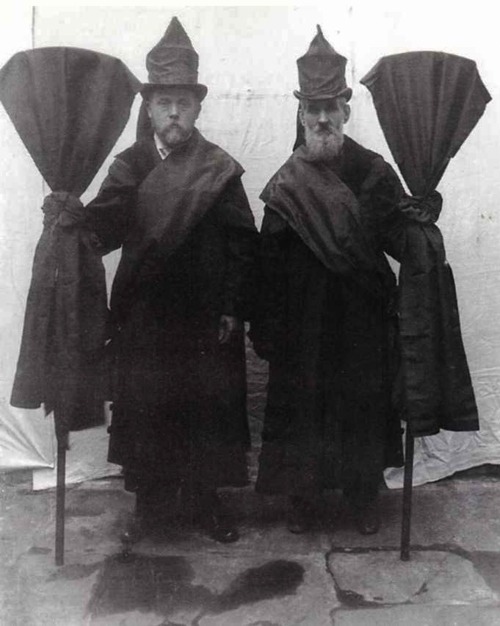
The challenge was taken up 50 years later by American locksmith Alfred Charles Hobbs who happened to be visiting England for the Great Exhibition of 1851. After struggling for 51 hours spread over 16 days, Hobbs opened the lock. The Bramah company paid him the 200 guineas even though he didn't technically open the lock with a device.
When I was a child I remember my grandmother saying that so-and-so
was so unpopular that, "They'll have to hire mourners for their funeral."

Professional Victorian mourners, the technical term: Undertaker's Mutes
These guys were paid to attend funerals to make the crowd look bigger.
These guys were paid to attend funerals to make the crowd look bigger.
Recognize this handsome young man?
It's a photo taken in 1901 of Hungarian actor Bela Lugosi,
better known to American audiences as Dracula:
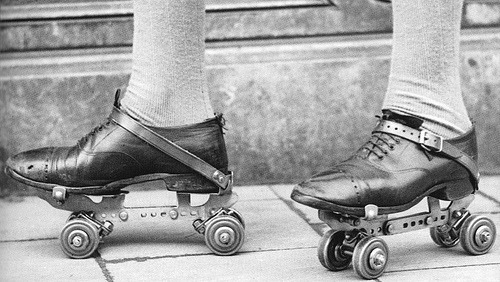
Because he never learned to drive, Bela Lugosi
zipped around Hollywood on rollerskates.
zipped around Hollywood on rollerskates.
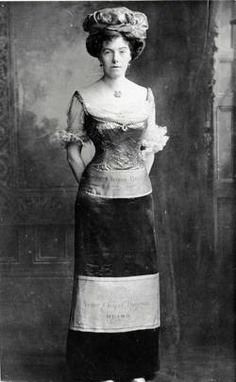
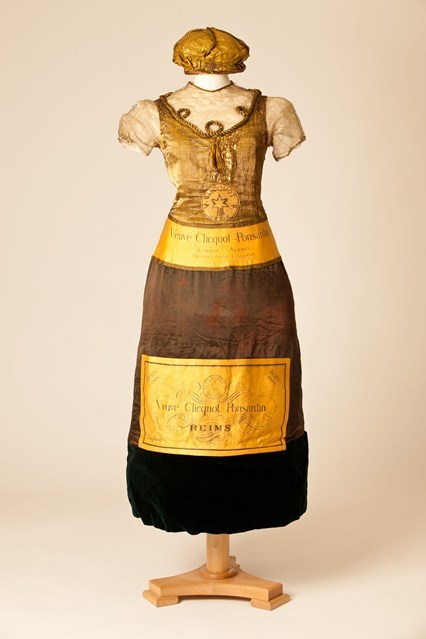
Vogue UK
Weird fashion isn't anything new. The model, left, is wearing a Veuve
Clicquot 'champagne' dress from 1902. The hat is the cork!
Do you know what the 4 people
pictured below have in common?
Weird fashion isn't anything new. The model, left, is wearing a Veuve
Clicquot 'champagne' dress from 1902. The hat is the cork!
Do you know what the 4 people
pictured below have in common?
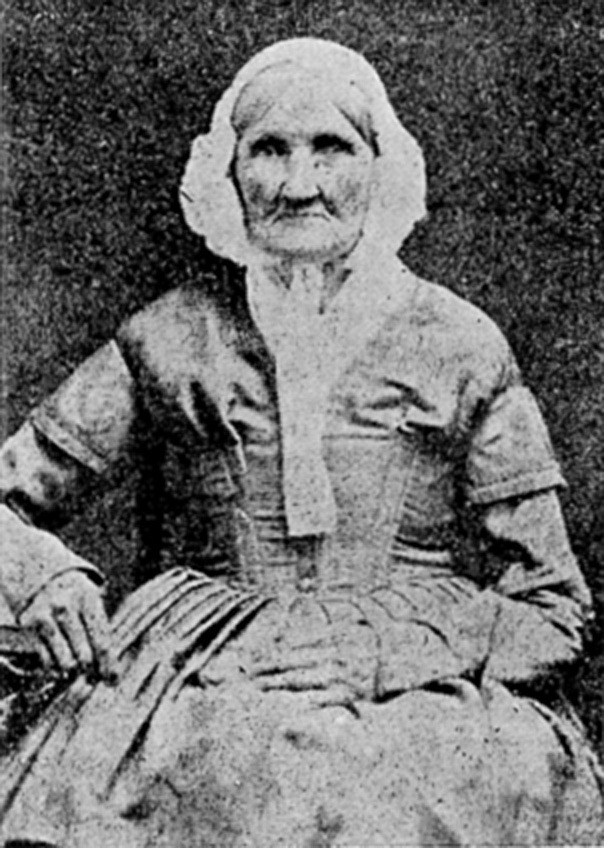
Hannah Stilley Gorby (1746-1846)
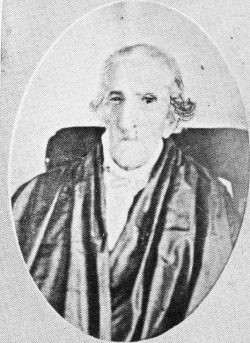
Dr. Ezra Green (1746-1847)
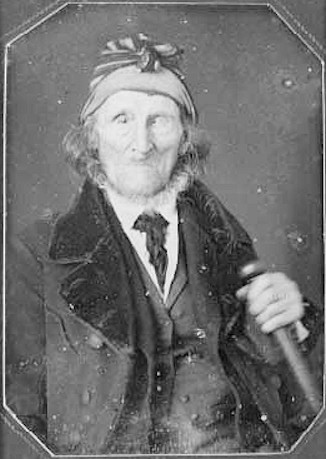
Baltus Stone (1747 - 1846)
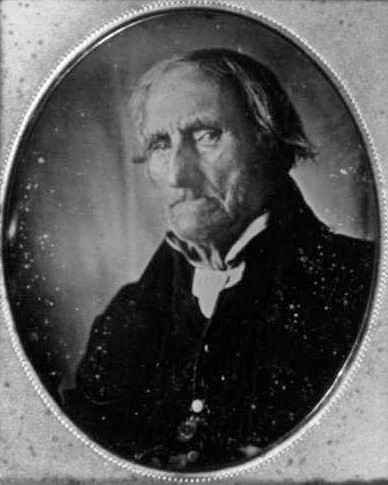
Conrad Heyer (1749 - 1846)
Source
These are four of the earliest-born people ever to be photographed. All were born in the 1740's and lived into their late 90's, long enough to experience the dawn of photography.
These are four of the earliest-born people ever to be photographed. All were born in the 1740's and lived into their late 90's, long enough to experience the dawn of photography.
All three men served in the American Revolutionary War (1775-1783) and would have seen George Washington sworn in as the first President of the United States in 1789.
It astounds me that all 4 were alive when Wolfgang Amadeus Mozart (1756-1791) and Ludwig van Beethoven (1770-1827) were composing and performing.
It astounds me that all 4 were alive when Wolfgang Amadeus Mozart (1756-1791) and Ludwig van Beethoven (1770-1827) were composing and performing.
![fapoleon-bonerparte:
Laurel leaf from the laurel wreath used at the coronation of Napoleon I. Mounted in a box frame. Gold. Circa 1804. Martin-Guillaume Biennais (1764-1843).
[Source]](http://24.media.tumblr.com/22268ab5713a18eb58ed9d28abdd52c1/tumblr_ms5xj6sncz1rj88bfo1_1280.jpg)
Source
The laurel leaf, above, is from the laurel wreath used
at the coronation of Napoleon I. To preserve it the
leaf was dipped in gold and framed. Circa 1804
Well, here's the Queen Mother of all mother-in-laws:
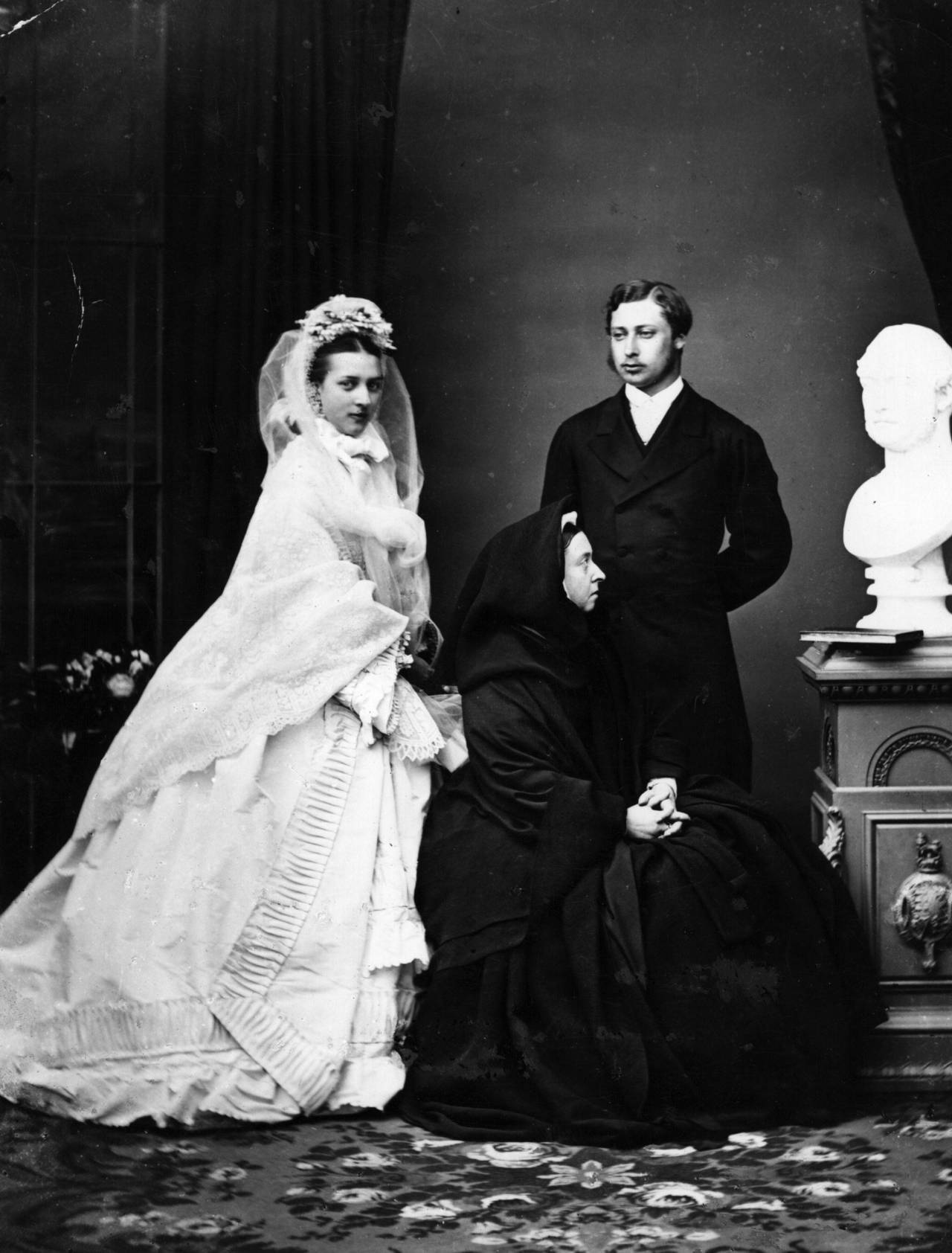
Source
In this 1863 wedding photo of Prince Albert to Princess Alexandra
of Denmark, his mother, Queen Victoria, insisted on being
photographed while staring at a bust of her late husband.
6th grade history student learns that Napoleon Bonaparte was exiled and died on the remote island of St. Helena, 1,160 miles from the west coast of African.
The small scrap of paper, left, is actually a piece of the wallpaper from the room in which Napoleon died on May 5, 1821. The locket contains a piece of his hair. Both were authenticated by officials who were present at his death. Celebrity hounds were no different in the 18th century than they are today.
Source
Surprised that a Chinese man fought in the American Civil War? Pvt. Joseph L. Pierce enlisted in the 14th Connecticut Infantry in August, 1862.
Pierce's birthplace was Canton in the Kwangtung Province of China. In 1851, when he was 10 years old, Pierce was brought to America by Captain Amos Peck. In Connecticut he was adopted by the Peck family but Pierce chose his last name to honor President Franklin Pierce.
His regiment participated in the Battle of Antietam, Md, on Sept. 17, 1862. Pierce survived the Civil War, returned to farming in Connecticut and lived to be 73 years old.
Surprised that a Chinese man fought in the American Civil War? Pvt. Joseph L. Pierce enlisted in the 14th Connecticut Infantry in August, 1862.
Pierce's birthplace was Canton in the Kwangtung Province of China. In 1851, when he was 10 years old, Pierce was brought to America by Captain Amos Peck. In Connecticut he was adopted by the Peck family but Pierce chose his last name to honor President Franklin Pierce.
His regiment participated in the Battle of Antietam, Md, on Sept. 17, 1862. Pierce survived the Civil War, returned to farming in Connecticut and lived to be 73 years old.
Most of us have heard of Dance Cards that originated in the early 18th century. At a dance or ball a gentleman asked a lady to dance and she had a small card or book on which she wrote their name beside the dance they requested.
This is a very rare early 19th century Dance Fan. The gentleman's name was written beside the dance (in blue) that he requested - a waltz, a polka, etc. It was much more practical than keeping track of cards or a book. An antique Victorian pencil, left, was also used at balls to write on dance and fan cards. But how did a gentleman keep track of the dances he was scheduled for and with which lady?
Ever get mad at your cat?
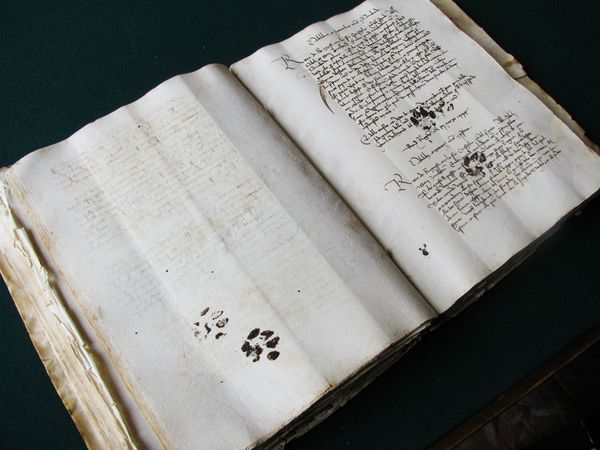
Over 300 years ago a mischievous cat walked through a pot of ink
then tracked it onto this 15th century manuscript. Bad kitty!
Bet you don't know the purpose of these Victorian tongs:

The tongs were called Dress Lifters - ladies wore them
hanging from their waists and used them to lift their skirts
if they stepped up into a carriage or had to lift their skirts
to step up on a curb.
How can you not like a Queen who loves dogs?
The Duke & Duchess
Queen Elizabeth of England with Susan,
right, her faithful companion, Circa 1952
Mugshot of the youngest criminal ever:
This is the mugshot of Francois Bertillon, age 23 months, who was arrested outside of Paris on Oct. 17, 1893. His crime? Gluttony. He ate all of the pears in a basket!
Written on the back of this photo postcard:
"Aunt Velma, she never married. 1888"
I'm thinking that's because Aunt Velma
was really Uncle Verne in drag.
E.E. Milne, author of the Winnie the Pooh books, named the various characters after his son's stuffed animals. Christopher Robin Milne gave the collection to publisher E.P. Dutton who donated them to the New York Public Library.
In closing, the most romantic Post-it in history:
SourceOn Dec. 9, 1936, King Edward VIII wrote to American divorcee
Wallis Simpson explaining his reason for abdicating the English throne:
"The only conditions on which I can stay
here are if I renounce you for all time."




.jpg)


.jpg)
.jpg)
.jpg)


.jpg)
.jpg)
.png)
That was fun! So many interesting - and strange - facts! Love the Milne stuffed animals and Queen Elizabeth with her beloved dog. The words that King Edward wrote....so romantic. Hope you are having a good week. xo Karen
ReplyDeleteThe story of Queen Elizabeth's faithful companion is my favorite - I'm always delighted to see photo of her out with her Corgis and am heartened by her affection for animals.
DeleteYou come up with the most interesting things, Jan. I am still giggling about Aunt Velma...
ReplyDeleteI love historical trivia, especially the weirdness of the 19th century. Can you imagine the things we'd see if photography had been invented centuries earlier?!
DeleteThat was fun! So much weird stuff. I agree that it would be cool if photography had been invented earlier.
ReplyDelete